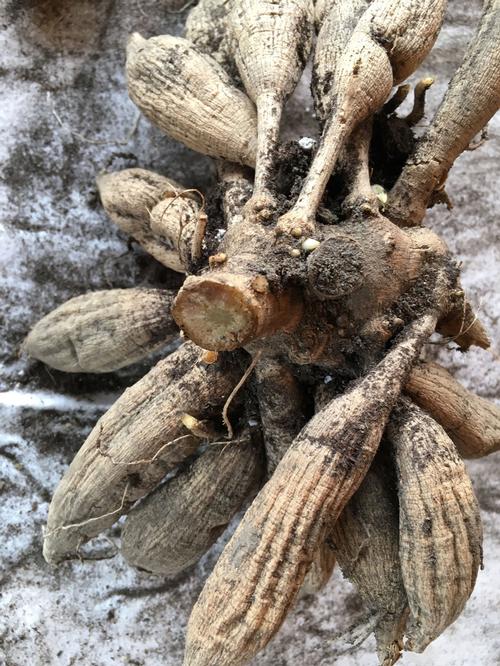Tips and Techniques for Storing Dahlia Tubers Indoors
Dahlias are at their best in late summer and fall, when the plants are mature and pumping out tons of blooms. But before the first frost, you have a decision to make. Will you treat your dahlias as annuals and plant a fresh batch of tubers next spring, or save the tubers from your favorite varieties and grow them again next year? If you want to try your hand at overwintering some tubers, read on for step-by-step instructions.
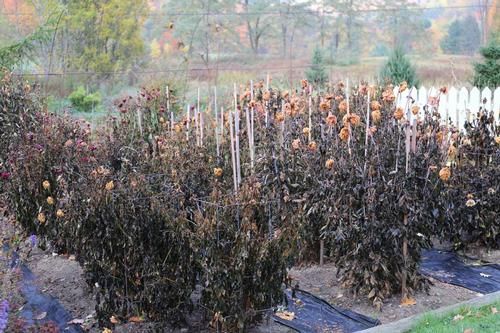
To Dig or Not to Dig
Dahlias are warm climate plants and they do not tolerate freezing temperatures. If you live in hardiness zones 8-10, where winter temperatures rarely fall below 20° F, the soil provides enough insulation to protect the tubers and it's safe to leave them right in the ground. In late fall, simply cut the plants back to several inches above soil level. They will start growing again in spring.
Dahlia tubers may survive a mild winter outdoors in zone 7 (as long as the soil is well drained and the area is thickly mulched). But in most of zone 7 and in all of zones 3-6, dahlia tubers must be dug up and stored indoors.
For this task you need pruning shears, a shovel or digging fork, survey tape and marker, damp growing mix, and either big nursery pots, black plastic trash bags, paper bags or large boxes. Here's how to do it:
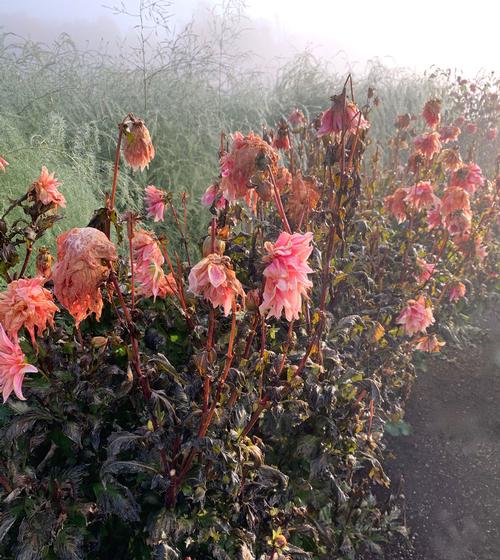
How to Dig and Store the Tubers
1. LABEL. Start by labeling your plants with survey tape (plastic plant labels are too easily lost). Be sure to do this BEFORE you get a frost so you can still see the flowers and evaluate which plants you want to keep. Save only the plants that are strong and healthy, and that really impressed you. There are tons of great dahlias out there and no reason to grow underwhelming ones.
2. CUT BACK. After the first hard frost, try to leave the tubers in the ground for a week or two. While waiting isn't essential, it does help to toughen the skin of the tubers. Don't cut down the plants until right before you dig them. This way water won't accumulate in the hollow stems. When you're ready to dig, cut back all of the stems to within 3-4” of the ground. Re-tie the labels as needed, so they are securely attached. If your dahlias were grown in containers, skip down to the section on packing and storage.
3. DIG. Dig up each root ball, starting at least a foot away from the stem. Depending on the size of the plant, the root ball may be 12” to 18” across and equally deep. Go slowly and be gentle, as the tubers are extremely brittle. During storage, damaged tubers are more susceptible to decay.
4. DRY. If possible, let the clumps air dry for a day or two. But make sure they are protected from frost. Tubers may be divided at this point, or you can wait and do it during the winter or early next spring. If you plan to divide your tubers later, there's no need to wash soil off the clumps. Just store the entire root ball as it came out of the ground. The soil gives them some natural protection from damage and rot. If you want to divide the tubers now (which will save on space if that's an issue) skip ahead to the dividing instructions below.
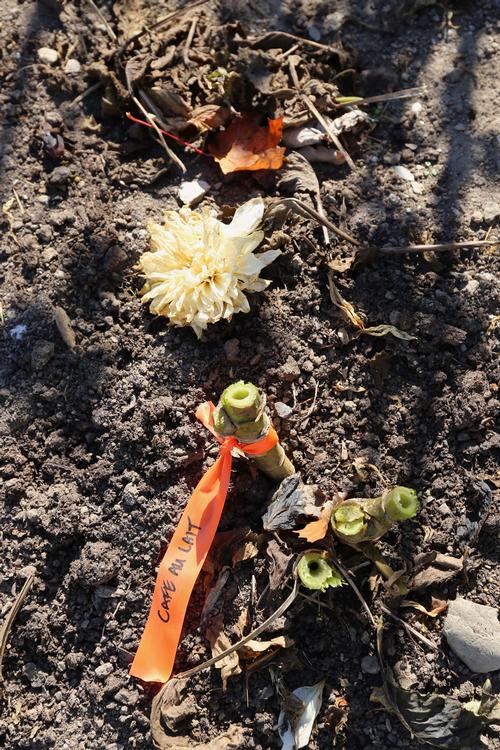
Packing and Storing Your Dahlias
5. PACK. If you are not dividing the root balls until spring, you can store them in several ways. You can put them in large nursery pots with barely damp potting soil. Or store them in ventilated cardboard boxes or large plastic storage tubs that are partially filled with growing mix, peat moss or vermiculite. Another option is to store several clumps together in a large black plastic trash bag.
Once your dahlias are in storage, the goal is to retain enough moisture to prevent the tubers from shriveling, but allow enough air circulation to avoid rot. This means keeping the tops of the storage tubs or plastic bags loose. The humidity level in your storage area makes a difference, so it may take a few seasons to arrive at the best solution. If the storage area is relatively humid, start with paper bags and boxes. If dry, go with tubs or plastic bags.
6. STORE. Store the pots, boxes or bags in a cool, dark, humid place where the temperature will stay between 40 and 50 degrees F. An unheated basement works well in the coldest climates. In zones 5 and 6 you may be able to keep them in an attached garage. Just make sure there's no chance that the tubers will freeze. A frozen tuber is a dead tuber.
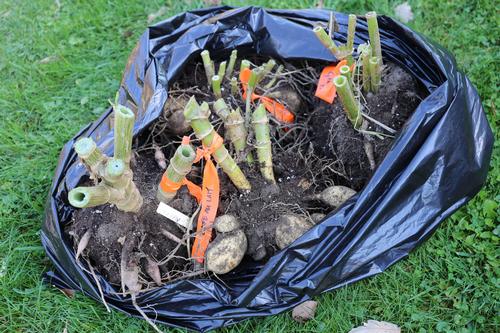
7. CHECK. Check on your dahlias periodically through the winter. If the storage conditions are too moist, you may get some mushy tubers. Remove them and increase the ventilation to reduce moisture levels. If the tubers are wrinkled and dry, mist them or add some damp growing mix to help them rehydrate.
Tips for Dividing and Replanting
In late winter or very early spring, pull out your dahlias and discard any tubers that are soft or have completely dried out. Then it's time to start dividing the root balls into manageable-sized clumps. If you want to skip dividing and simply replant an entire clump, go ahead. Otherwise, read on.
When dividing a clump of dahlia tubers, each division must wind up with one or more growth eyes. These eyes occur in a very specific location. In the photo below, some of the eyes have begun to sprout, so it's easy to see how they are clustered on the knobby part where the tuber is attached to the stem. No matter how good a tuber looks, if it doesn't have at least one eye, it will not grow a plant.
It takes practice to see the eyes, and dividing clumps of tubers can be intimidating. If you wait until early spring, some of the eyes will start to swell and sprout. This makes it easier to see where to make the cuts. To be on the safe side, you can simply divide large root balls into halves or quarters. Cut down through the middle of the clump, making sure to leave some of last year’s stem attached to each division.
To learn more, you can watch this video on our YouTube channel: How to Overwinter Dahlia Tubers, or read some of the following articles on our website: All About Dahlias, How to Pinch and Stake Dahlias, How to Plant Dahlias (video), and Dahlias: 8 Great Looks.
